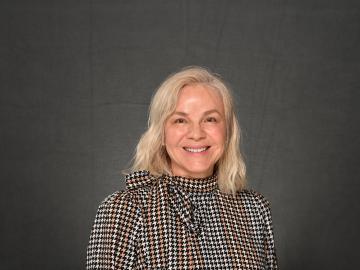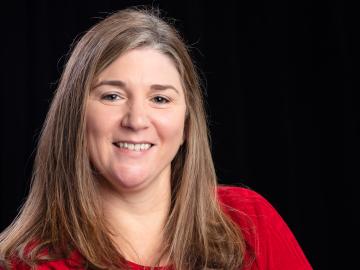Filter News
Area of Research
- (-) Isotopes (14)
- (-) Supercomputing (50)
- (-) Transportation Systems (2)
- Advanced Manufacturing (16)
- Biological Systems (2)
- Biology and Environment (76)
- Building Technologies (7)
- Chemical and Engineering Materials (1)
- Chemistry and Physics at Interfaces (1)
- Clean Energy (230)
- Climate and Environmental Systems (4)
- Computational Biology (1)
- Computational Engineering (2)
- Computer Science (10)
- Data (1)
- Electricity and Smart Grid (1)
- Energy Frontier Research Centers (1)
- Energy Sciences (2)
- Fossil Energy (1)
- Functional Materials for Energy (1)
- Fusion and Fission (11)
- Fusion Energy (8)
- Isotope Development and Production (2)
- Materials (109)
- Materials for Computing (10)
- Materials Synthesis from Atoms to Systems (1)
- Materials Under Extremes (1)
- Mathematics (1)
- National Security (24)
- Neutron Data Analysis and Visualization (2)
- Neutron Science (43)
- Nuclear Science and Technology (23)
- Nuclear Systems Modeling, Simulation and Validation (2)
- Quantum information Science (3)
- Renewable Energy (3)
- Sensors and Controls (3)
News Type
News Topics
- Advanced Reactors (1)
- Artificial Intelligence (1)
- Big Data (5)
- Biology (1)
- Biomedical (7)
- Chemical Sciences (1)
- Climate Change (4)
- Computer Science (19)
- Coronavirus (2)
- Critical Materials (3)
- Decarbonization (1)
- Energy Storage (2)
- Environment (6)
- Exascale Computing (2)
- Frontier (2)
- Fusion (1)
- High-Performance Computing (6)
- Irradiation (1)
- Isotopes (10)
- Machine Learning (1)
- Materials (3)
- Materials Science (2)
- Nanotechnology (1)
- National Security (1)
- Nuclear Energy (1)
- Polymers (2)
- Quantum Computing (4)
- Quantum Science (3)
- Simulation (2)
- Space Exploration (2)
- Summit (6)
- Sustainable Energy (1)
- Transportation (3)
Media Contacts

Hilda Klasky, a research scientist in ORNL’s Computing and Computational Sciences Directorate, has been named a fellow of the American Medical Informatics Association.

Raina Setzer knows the work she does matters. That’s because she’s already seen it from the other side. Setzer, a radiochemical processing technician in Oak Ridge National Laboratory’s Isotope Processing and Manufacturing Division, joined the lab in June 2023.

Safety, Engineering and Support Section Head Michele Baker brings strategic planning and emergency management skills to the role.

Researchers from Oak Ridge National Laboratory and Northeastern University modeled how extreme conditions in a changing climate affect the land’s ability to absorb atmospheric carbon — a key process for mitigating human-caused emissions. They found that 88% of Earth’s regions could become carbon emitters by the end of the 21st century.

It was reading about current nuclear discoveries in textbooks that first made Ken Engle want to work at a national lab. It was seeing the real-world impact of the isotopes produced at ORNL

Oak Ridge National Laboratory researchers have developed a method to simplify one step of radioisotope production — and it’s faster and safer.

An advance in a topological insulator material — whose interior behaves like an electrical insulator but whose surface behaves like a conductor — could revolutionize the fields of next-generation electronics and quantum computing, according to scientists at ORNL.

At the National Center for Computational Sciences, Ashley Barker enjoys one of the least complicated–sounding job titles at ORNL: section head of operations. But within that seemingly ordinary designation lurks a multitude of demanding roles as she oversees the complete user experience for NCCS computer systems.

Growing up in suburban Upper East Tennessee, Layla Marshall didn’t see a lot of STEM opportunities for children.
“I like encouraging young people to get involved in the kinds of things I’ve been doing in my career,” said Marshall. “I like seeing the students achieve their goals. It’s fun to watch them get excited about learning new things and teaching the robot to do things that they didn’t know it could do until they tried it.”
Marshall herself has a passion for learning new things.

A study led by Oak Ridge National Laboratory researchers identifies a new potential application in quantum computing that could be part of the next computational revolution.




